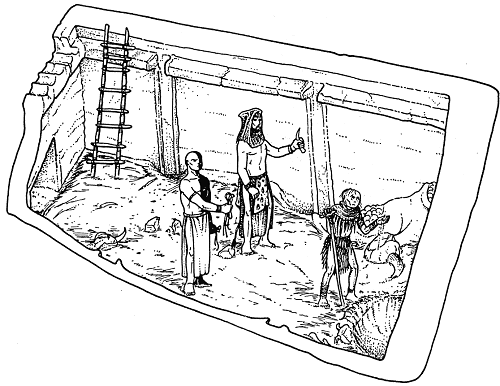Reconstructions
by John-Gordon Swogger
Figure 24: Space 117, reconstruction of abandonment phase.
Visual representation plays an important role in the construction of archaeological reality. It is often the primary means by which a site is presented to the world beyond the site itself. Museums, popular books and magazines, as well as specialist archaeological texts and journals all depend on visual images of sites to present them to their audiences. The importance therefore, of illustrations and reconstructions in the shaping and moulding of wider perceptions of an excavation should not be underestimated.
Çatalhöyük has long been represented visually through the reconstructions produced during the 1960s excavations. This season, for the first time since the 1960s, new reconstructions of the buildings and activities represented in the archaeological record at Çatalhöyük have been produced. These images draw upon the wide range of data produced by the new methods of excavation, recording and interpretation now used at the site.
A series of reconstructions is being produced for each of the buildings and spaces under excavation. As each building or space evolved over time, and the shape and function of different parts of the structure changed to accommodate the changing demands of the building's Neolithic inhabitants, so the building or space can be said to move through various distinct phases. Each of these phases has been reconstructed separately. For each reconstruction, data is collated from the excavators' plans and section drawings of the building, their assessment of the stratigraphy of the layers within the building, and their understanding of the evidence of different phases of structural construction, change or destruction. These data are then combined with evidence from the specialist teams, such as plots of artefact distribution, botanical and faunal analyses, thin sections through plaster floors and walls, etc.. Finally, observations from ethnoarchaeological and ethnobotanical studies and current theories about the use and function of space within the Çatalhöyük interior spaces are incorporated.
The result is a new way of looking at and presenting Çatalhöyük that reflects the new archaeological methods and practices being used by the excavation and analysis teams.